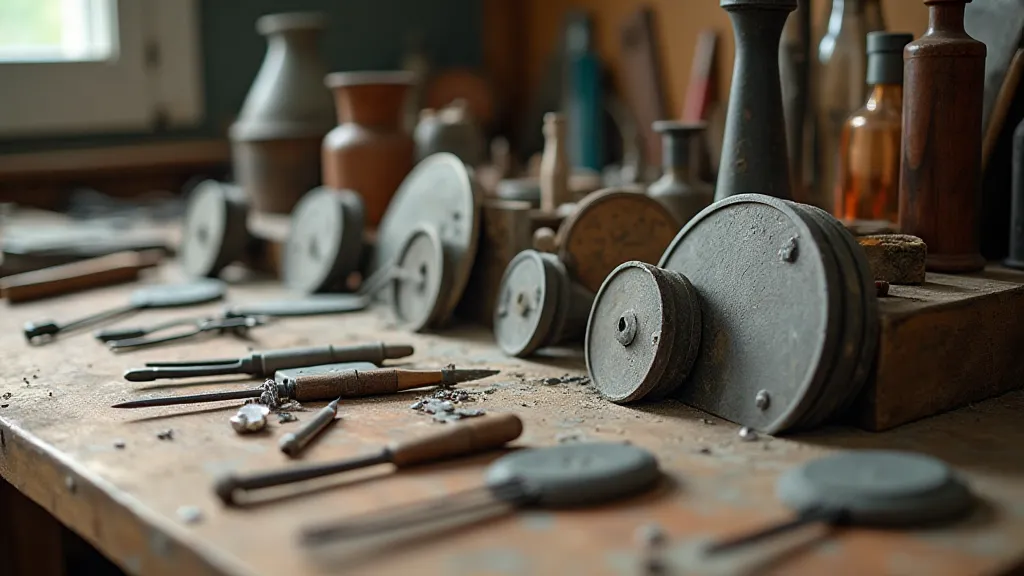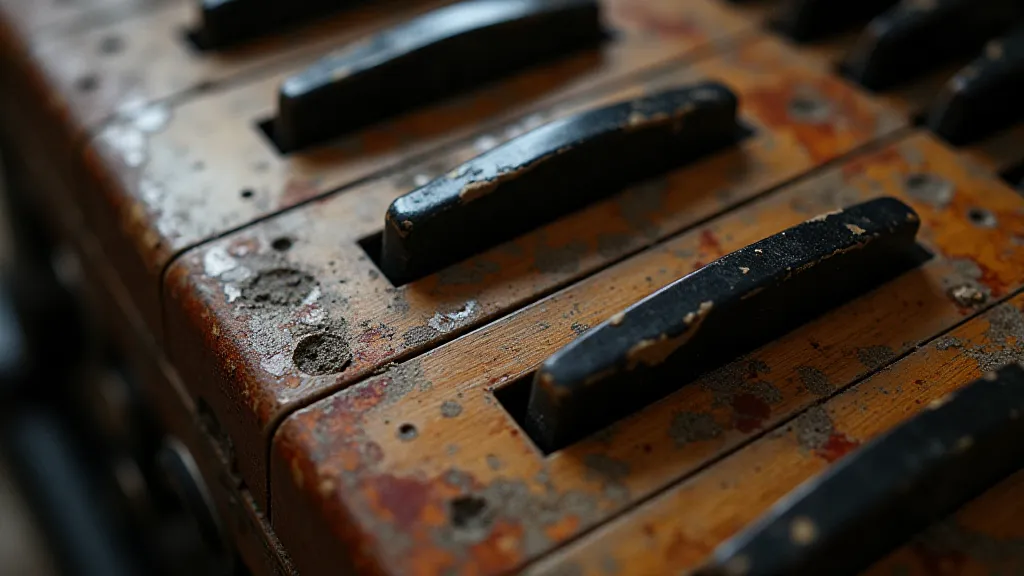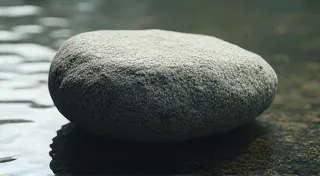Fractured Facets: How Imperfection Fuels Artistic Brilliance in Lapidary and Prose
There's a melancholic beauty in aged things. A resonance that speaks of time, of labor, of stories lived and lessons learned. I think of this often when I’m working with stones, or when I'm wrestling with a particularly stubborn paragraph. It's a feeling profoundly linked to an old accordion I inherited from my grandfather. Its bellows are worn, the keys stick occasionally, and the varnish is cracked like a map of hidden rivers. Yet, when played, it releases a sound both haunting and vibrant – a testament to enduring spirit, imperfections and all. It’s this same appreciation for the beauty of the flawed that I find so compelling in both lapidary and in writing.
The process of transforming a rough, unassuming piece of raw stone into a polished gem is inherently about revelation. It’s about coaxing out the beauty already locked within. The stone doesn’t want to be beautiful, not in the way we envision. It resists, it fractures, it presents challenges at every stage. A lapidarist isn’t simply imposing their will; they are collaborating with the stone, learning to read its grain, understanding its vulnerabilities. The initial cuts are often brutal, removing layers, exposing what lies beneath. A skilled lapidarist doesn’t seek perfection in the sterile, manufactured sense. They embrace the inclusions, the internal fractures, the unexpected color shifts – these are the markers of authenticity, the signature of the earth.

The Stone’s Story: Inclusions and Character
Consider an opal. Its mesmerizing play of color isn't due to uniformity. It arises from the intricate arrangement of microscopic silica spheres, some larger, some smaller, some perfectly aligned, others subtly skewed. These variations create the “fire” that makes opals so captivating. An inclusion, a small fleck of another mineral trapped within, isn't a defect. It's a piece of the stone's history, a reminder of the geological processes that shaped it. The same logic applies to turquoise, often riddled with veins of pyrite or matrix. These aren't flaws; they're part of the character, adding depth and complexity to its beauty. Just as each stone tells a unique story, the exploration of earth's layers and history is fascinating. For those wanting to dig deeper into the narratives held within rocks, “Geological Palimpsest: Reading the Layers of Earth’s History in a Single Rock” offers a compelling journey. Rockhounding locations, carefully researched and documented in a mineral collecting guide, often yield specimens rich in these narratives – stories etched in stone.
Similarly, in writing, the moments of greatest originality often stem from embracing what we might initially perceive as shortcomings. That awkward sentence, that unexpected metaphor, that seemingly irrelevant digression – these are the chances to inject personality and authenticity into our prose. Think of the great novelists: Hemingway's sparse, almost brutal sentences, Faulkner's stream-of-consciousness narratives, Virginia Woolf's exploration of interiority. Their styles weren't born from adherence to rules; they evolved from a willingness to break them, to explore the edges of language and thought.
Gem Cutting Equipment and the Art of the Cabochon
The world of lapidary techniques tutorial offers a spectrum of approaches, from rough-and-tumble tumble polishing for beginners to the precision of faceting. Tumbling rocks for beginners is surprisingly satisfying, creating smooth, rounded stones perfect for simple jewelry. But the true artistry lies in the cabochon making guide – shaping a stone into a smooth, domed form that showcases its color and pattern. This requires an intuitive understanding of the stone's structure, a sensitivity to its flow. A cabochon isn't about perfection; it's about capturing the essence of the stone, revealing its inner beauty. The gentle shaping and mindful creation process can be quite meditative. In fact, the act of transforming raw materials and finding beauty within imperfections echoes the search for inner peace and tranquility – themes explored further in "Sculpting Silence: The Art of Cabochon Making as a Reflection of Inner Peace".
The initial stages involve rough shaping, often using diamond saws and grinding wheels. Then comes the careful sanding, progressing through a series of increasingly finer grits, until the stone achieves a silky smoothness. The final polish reveals the true depth of color and pattern. But even then, the stone isn't flawless. It bears the marks of its journey, the subtle variations in texture, the faint lines of where the grinding wheel touched its surface. These aren't imperfections; they’re testament to the hand that shaped it.

From Rough Draft to Refined Prose: Finding the Flaw's Value
The parallels are undeniable. A first draft of a story is akin to a piece of rough stone – unshaped, unrefined, full of potential but lacking definition. The writing process itself becomes the lapidary work, the meticulous shaping and polishing of language. We cut away extraneous words, grind down clumsy sentences, and refine the rhythm and flow. But just as a lapidarist must resist the urge to erase all signs of the stone's origins, a writer must embrace the quirks and imperfections in their prose.
Those moments of uncertainty, those digressions that seem to lead nowhere – they can be gold. They can reveal unexpected connections, illuminate hidden meanings, and inject a sense of authenticity into the narrative. It’s in those seemingly “flawed” moments that a writer’s voice truly emerges. The ability to observe, analyze, and interpret the stories held within rocks is a skill that parallels the art of crafting compelling narratives. Those looking to refine their observational skills and unlock deeper meanings within the natural world might appreciate "The Geologist's Quill: Charting a Course Through Earth's Hidden Stories".
Collecting Stories and Stones: A Legacy of Imperfection
My grandfather’s accordion, like the stones I work with, tells a story. It speaks of resilience, of perseverance, of the beauty that can be found in the worn and weathered. Identifying rocks and minerals through a mineral collecting guide isn't just about categorizing; it's about understanding their history, appreciating their uniqueness, and recognizing the stories they hold. It's about connecting with the earth and its enduring artistry. The understanding that each piece of stone, and each story, holds a unique and valuable history is a powerful concept.
Creating custom jewelry isn't solely about aesthetics; it’s about crafting a piece of wearable history, incorporating fragments of the earth into something personal and meaningful. Similarly, the ability to appreciate and embrace imperfection – in gemstones, in writing, and in life – is a key to unlocking creativity and finding beauty in the unexpected. It’s a lesson learned from an old accordion and a piece of rough stone.






